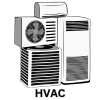There are several types of air intake systems, each designed to enhance engine performance, fuel efficiency, and air filtration. Here’s a detailed breakdown of the most common types:
In this article :
1. Cold Air Intake (CAI):
Draws cooler air from outside the engine bay to boost combustion efficiency and power.
Improves horsepower and throttle response but can be vulnerable to water ingestion.
Example: K&N CAI on a Honda Civic Si.
Purpose: Increase power by drawing in cooler, denser air from outside the engine bay.
Key Features:
- Longer intake tube, often routed to lower areas of the engine bay.
- Larger and less restrictive air filter.
- Usually made from plastic, aluminum, or carbon fiber to reduce heat absorption.
Advantages:
- Cooler air = more oxygen = better combustion.
- Can increase horsepower and throttle response.
- Enhances engine sound.
Disadvantages:
- Susceptible to water ingestion (hydrolock) in heavy rain or puddles.
- May require tuning for optimal performance.
2. Short Ram Intake (SRI):
Uses a short, direct air path for faster throttle response and easier installation.
Draws warmer engine bay air, offering less power than CAI but safer in wet conditions.
Example: AEM SRI on a Mazda 3.
Purpose: Improve airflow with a short, direct path to the engine.
Key Features:
- Shorter intake pipe compared to CAI.
- Positioned closer to the engine.
- Typically simpler and easier to install.
Advantages:
- Increased airflow over stock systems.
- Faster throttle response due to reduced air path.
- Lower cost than CAI.
Disadvantages:
- Draws in warmer air from the engine bay.
- Less performance gain compared to CAI.
3. Ram Air Intake
Uses forward vehicle motion to force high-pressure air into the engine at speed.
Most effective at high RPM or highway speeds, often used in racing.
Example: Factory ram air on Pontiac Trans Am WS6.
Purpose: Use vehicle speed to force air into the engine for more power.
Key Features:
- Intake openings positioned at the front of the vehicle.
- Uses vehicle’s forward motion to “ram” air into the intake.
- Often used in racing and high-performance vehicles.
Advantages:
- Increased air pressure at high speeds = more airflow and power.
- Effective at high RPMs or highway speeds.
Disadvantages:
- Limited benefits at low speeds.
- More complex ducting and design.
4. Stock/OEM Air Intake
Factory-designed for quiet operation, emissions control, and fuel efficiency.
Highly reliable with good filtration but airflow is more restricted.
Example: OEM intake system on a Toyota Corolla.
Purpose: Balanced design focused on noise control, emissions, and economy.
Key Features:
- Includes an air filter box, intake ducting, and sound resonators.
- Designed for efficiency and reliability.
Advantages:
- Quiet and efficient.
- Good filtration.
- Maintains manufacturer warranty and emissions compliance.
Disadvantages:
- Restrictive design limits airflow.
- Less power potential compared to aftermarket systems.
5. Heat Shielded Intake
Encloses the filter in a shield or box to block hot engine air.
Balances power and protection, blending CAI and SRI features.
Example: aFe Momentum GT intake on a Ford Mustang GT.
Purpose: Combine SRI simplicity with CAI performance by isolating intake from engine heat.
Key Features:
- Uses a heat shield or enclosed box around the air filter.
- Sometimes paired with ducting to bring in cold air.
Advantages:
- Reduces heat soak from the engine bay.
- Better performance than standard SRI.
- Safer than a full CAI in wet conditions.
Disadvantages:
- Performance gain depends on the quality of heat shielding.
- Slightly more complex installation.
6. Dual Air Intake
Uses two intake paths to feed larger engines more air efficiently.
Improves airflow and performance in V6 or V8 engines.
Example: Dual intake system on a Dodge Charger 5.7L V8.
Purpose: Increase airflow by using two intake paths.
Key Features:
- Two air filters and intake tubes feeding the throttle body.
- Often seen in V6 or V8 engines.
Advantages:
- More airflow for high-displacement engines.
- Enhanced performance and engine sound.
Disadvantages:
- Takes up more space.
- Higher cost and installation complexity.
How to choose the right air intake system?
1. What do you want?
- More power? Get a Cold Air Intake (brings in cooler air = better performance).
- Better sound? Both Cold Air and Short Ram will give you more engine sound.
- Easy install & cheaper? Get a Short Ram Intake (but a bit less power than cold air).
- Stock look, tiny boost? Just change the air filter.
2. Where do you drive?
- Dry roads, good weather? Cold Air Intake is great.
- Rain, floods, or off-road? Avoid Cold Air Intake — could suck in water. Use Short Ram or sealed systems.
Other courses:



